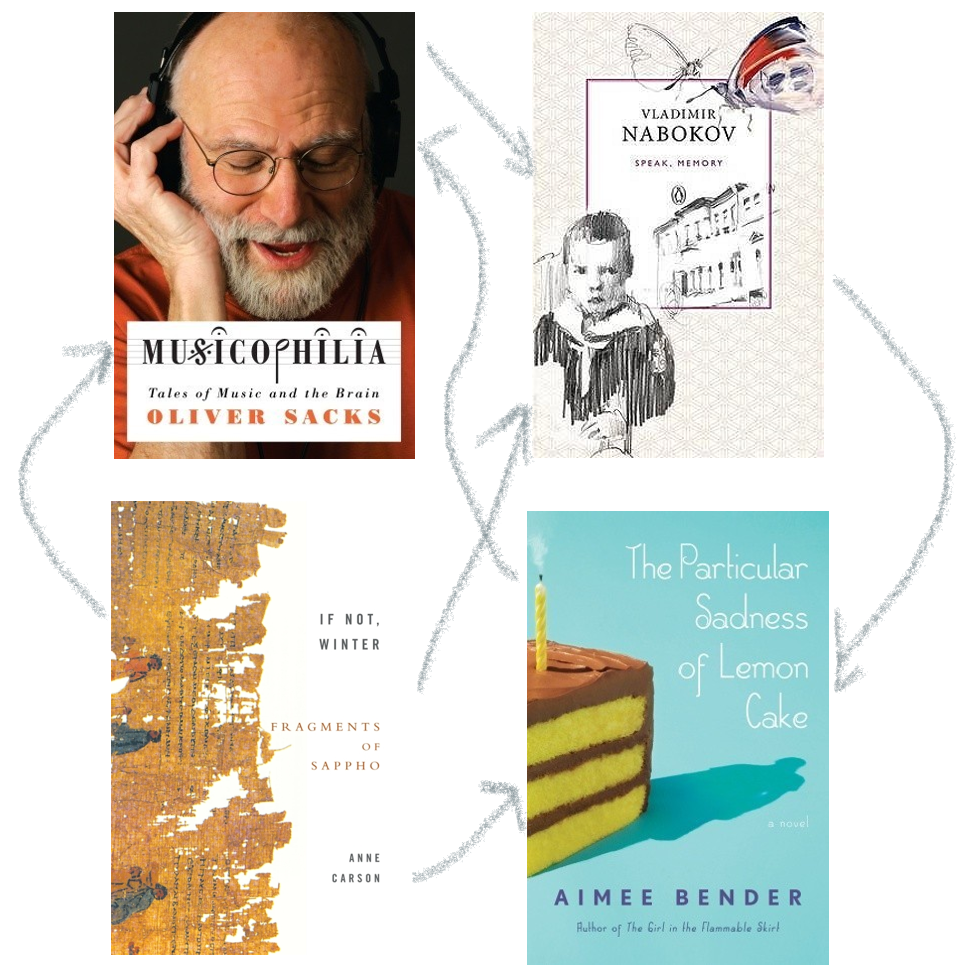On synesthesia
Dedicated to Oliver Sacks (1933-2015) for this Pride Month.
Synesthesia or synaesthesia is a perceptual phenomenon. It is an overlap or blending of the senses in some people. A particular sense when stimulated leads to a sensation in a different sensory path. For example, they see numbers as colors or taste shapes. How is this different from having emotional responses to music or art so familiar to us? Does a French song evoke the taste of raspberry sorbet in your mouth? An old lover: the smell of felled timber and sawdust. The difference is that synesthetes have quite abstract sensory relationships. Seeing the bright pink letter 'B' in space is a specific synesthetic experience. There can be a multitude of sensory combinations. The causes of synesthesia are still unknown. Although, human brain plasticity makes for a gradient of synesthetic elements defying categorization. And the following books celebrate the possibilities of this sensory spectrum.
I had a friend who played classical Western music to hatching eggs. I never found out if the chicks preferred Wagner over Bach but I gifted her Musicophilia by Oliver Sacks. I was reading Hallucinations myself around that time. Both these books explore examples of synesthetes. A compassionate starter into lives of unusual perceptions.
My love for lemon cake has a curious origin. On her ninth birthday, a girl bites into a slice of her mother's lemon cake and tastes emotions. A culinary psychic. She feels her mother's sadness, hunger, and spiraling. The Particular Sadness of Lemon Cake by Aimee Bender is a surreal and fabulist novel about growing up in LA with an extrasensory palate. For a particular quiche, she perceives the eggs are from Michigan, parsley from San Diego, and cream from Nevada. Soon after reading this book (and watching Ratatouille), I started cooking. Can anyone in all honesty separate flavors and emotions?
Vladimir Nabokov. Whether you have read Lolita or any of his letters to his beloved Vera, his experience of colored hearing in Speak, Memory is delectable.
Oatmeal n, noodle-limp l, and the ivory-backed hand mirror of o take care of the whites...Passing on to the blue group, there is steely x, thundercloud z, and huckleberry k...In the green group, there are alder-leaf f, the unripe apple of p, and pistachio t...In the brown group, there are the rich rubbery tone of soft g, paler j, and the drab shoelace of h...
Finally, among the reds, b has the tone called burnt sienna by painters, m is a fold of pink flannel, and today I have at last perfectly matched v with “Rose Quartz” in Maerz and Paul’s Dictionary of Color.
Connecting these three books is an ancient weaver of senses: Sappho. Technically, not a synesthete. But who defines these boundaries? I love that the gaps in her fragments welcome us to create an alchemy of our own senses. Pick up Anne Carson’s translation If Not, Winter: Fragments of Sappho for a summer read.
And her light stretches over salt sea equally and flowerdeep fields. (96)
It rained here yesterday. The sky tastes like coconut water today. What does your sky taste like?
Until next time.



Not really synaesthesia, but when I walk over a relatively smooth surface I experience something I've coined “phantom skateboard”. Similar to phantom pain, I feel the absence of my skateboard underneath my feet. My body compels me to push my board, but I can't.
Other than that, I admit I've always been jealous of Richard Feynman's ability to see math in colors. I wonder what came first though, was he a physics talent because he could see math in colors, or did the synaesthesia came after unabated practice. The brain remains such a fascinating treasure chest to be unlocked. For example, how some people after experiencing head trauma suddenly become math geniuses. Wouldn't it be awesome if we could artificially summon that effect?
I loved reading this one 😊